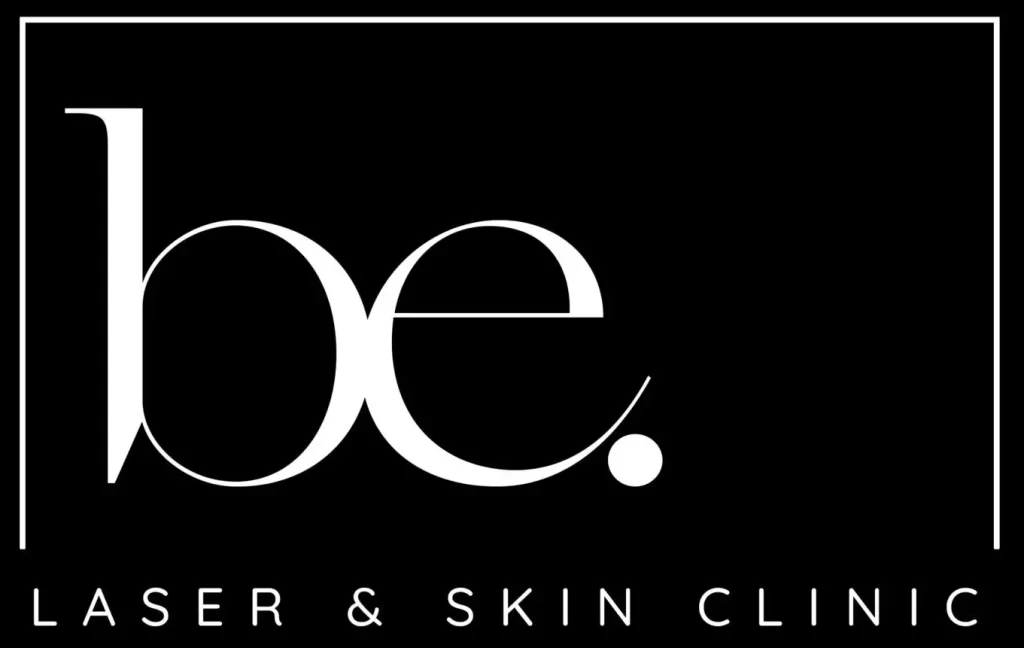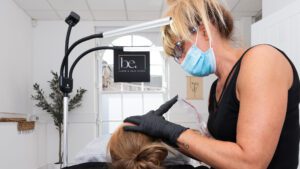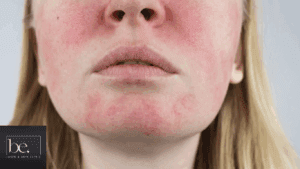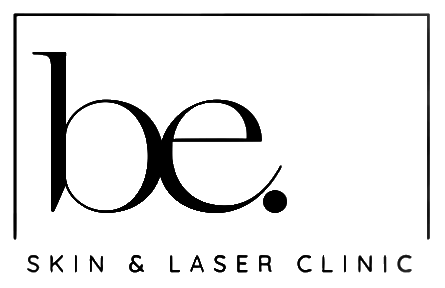So, you’ve got a tattoo you’re not so keen on anymore, huh? Maybe you want to get rid of it completely, or perhaps you’re just looking to lighten it up for a fresh new design. Whatever your reason, understanding how many tattoo removal sessions you’ll need is a big deal. It’s not a one-size-fits-all thing, and there’s a fair bit to consider. Let’s dig into what makes a difference, from the ink itself to your own body, and help you get a clearer picture of what to expect.
Key Takeaways
- Fading a tattoo for a cover-up usually needs fewer tattoo removal sessions than getting rid of it totally.
- Things like the tattoo’s colour, how old it is, and where it sits on your body all change how many tattoo removal sessions you’ll need.
- Lasers break down the ink, and then your body naturally gets rid of it over time.
- You’ll get an idea of how many tattoo removal sessions you’ll need after a first chat with a specialist.
- Looking after your skin before and after each tattoo removal session is really important for good results and to help avoid problems.
.
Understanding Tattoo Fading Versus Full Removal
So, you’re thinking about getting rid of that tattoo, eh? Or maybe just making it a bit lighter so you can slap a new design over the top. Either way, it’s good to know what you’re getting into. There’s a difference between fading a tattoo and getting rid of it completely, and it affects how many sessions you’ll need, the cost, and what to expect during the process. Let’s break it down.
The Nuances of Fading for Cover-Ups
Fading a tattoo for a cover-up is like prepping a canvas. You’re not trying to erase the original artwork entirely; you just want to lighten it enough so the new design can shine through. This usually means fewer laser sessions compared to full removal. Think of it as turning down the volume on the old tattoo so the new one can take centre stage. The number of sessions needed really depends on how dark and dense the original tattoo is, and what the new design will look like. A lighter, more open design will need more fading than a dark, solid one.
Achieving Complete Tattoo Removal
Full tattoo removal is the whole shebang. You’re aiming to erase that ink like it never existed. This takes time, patience, and a commitment to multiple laser sessions. It’s not a quick fix, and it’s important to have realistic expectations. The process involves breaking down the ink particles into smaller pieces that your body can naturally get rid of. This can be a longer process than fading, and the number of sessions can vary wildly depending on the tattoo’s characteristics.
Key Differences in Treatment Goals
The main difference boils down to the end goal. Fading aims to lighten the tattoo enough for a cover-up, while full removal seeks to eliminate it entirely. This difference significantly impacts the number of sessions, the intensity of the laser treatment, and the overall cost. It’s important to discuss your goals with a qualified technician to determine the best course of action.
Here’s a quick comparison:
- Fading: Fewer sessions, lower cost, prepares for a new tattoo.
- Full Removal: More sessions, higher cost, aims for complete erasure.
- Discomfort: Both involve some discomfort, but full removal might be slightly more intense due to the longer treatment period.
.
Factors Influencing Tattoo Removal Sessions
Ink Colour and Pigment Depth
Right, so the colour of your tattoo ink and how deep it sits in your skin are massive players in how many sessions you’ll need. Darker inks, like black and dark blue, usually respond best to laser treatment because they absorb the laser light more effectively. Lighter colours, such as greens, yellows, and pastels? They’re a pain. They reflect more light, meaning the laser has to work harder, and you’ll probably need more sessions to see any real difference.
- Black and dark blue: Easier to remove.
- Lighter colours: Harder to remove, requiring more sessions.
- Deeper ink: Takes longer to break down.
.
Tattoo Age and Application Method
Older tattoos tend to fade a bit naturally over time, which can actually make them slightly easier to remove. The ink has already started to break down a little. Professional tattoos, though, are usually applied with more precision and often with higher-quality inks that are more densely packed. This means they can be more stubborn than amateur tattoos, which might have been applied unevenly or with less stable inks. The application method really does impact the number of sessions.
Basically, a faded old tattoo done by your mate in his garage might vanish quicker than a vibrant, professionally done piece you got last year.
Skin Type and Location on the Body
Your skin type plays a role because it affects how well your skin heals after each laser session. People with lighter skin tones generally experience fewer complications and might see faster results. Darker skin tones can be treated, but there’s a higher risk of pigmentation changes, so the laser settings need to be adjusted carefully, potentially increasing the number of sessions. Also, the location of the tattoo matters. Areas with good blood circulation, like the upper back, tend to respond better to treatment because the body can clear away the broken-down ink more efficiently. Tattoos on areas with less circulation, such as hands or feet, might need extra sessions. If you are considering tattoo fading, keep these factors in mind.
- Lighter skin: Generally faster results.
- Darker skin: Requires careful laser settings.
- Good circulation areas: Faster ink clearance.
.
The Science Behind Laser Tattoo Removal Sessions
How Lasers Break Down Ink
Okay, so how does this laser thing actually work? Basically, tattoo removal lasers emit concentrated beams of light. These beams are designed to target the specific pigments in your tattoo ink. The laser light shatters the ink particles into smaller pieces. Think of it like smashing a boulder into tiny pebbles. These smaller particles are then easier for your body to get rid of. Different lasers are used for different ink colours, as each colour absorbs light at a different wavelength. It’s all about finding the right frequency to break down that specific ink.
The Body’s Natural Clearance Process
Once the laser has done its job of breaking down the ink, it’s up to your body to clear it away. Your immune system steps in, specifically cells called macrophages. These macrophages are like tiny garbage collectors, engulfing the shattered ink particles and carrying them away through the lymphatic system. This is a gradual process, which is why you need multiple sessions with time in between. It gives your body a chance to do its thing and flush out the ink. Factors like your overall health and immune function can affect how quickly your body clears the ink. So, staying healthy can actually help speed up the tattoo fading process!
Advancements in Laser Technology
Laser tattoo removal tech has come a long way, thankfully! Older lasers were less precise and more likely to cause scarring. Newer lasers, like picosecond lasers, deliver energy in ultra-short pulses. This means they can shatter the ink into even smaller particles, making it easier for the body to clear them.
Here’s a quick rundown:
- Q-Switched Lasers: The older, reliable tech.
- Picosecond Lasers: Newer, faster, and often more effective.
- Different Wavelengths: Tailored to target specific ink colours.
.
The advancements in laser technology mean that tattoo removal is now safer and more effective than ever before. The precision targeting of ink, combined with the body’s natural clearance process, makes it possible to significantly fade or completely remove unwanted tattoos.
It’s worth chatting with a practitioner about what type of laser they use and why it’s the best option for your tattoo.
Estimating Your Tattoo Removal Sessions
So, you’re thinking about getting rid of that tattoo, eh? Or maybe just fading it enough for a cover-up? Figuring out how many sessions you’ll need is a big part of the process. It’s not an exact science, but we can give you a decent estimate.
Initial Consultation and Assessment
First things first, you’ll need to have a chat with a professional. This initial consultation is super important. They’ll take a good look at your tattoo and ask you about your skin type, health, and what you’re hoping to achieve. This assessment helps them tailor a plan just for you. They’ll consider things like:
- The size of the tattoo
- The colours used
- How long you’ve had it
.
Think of it like going to the doctor. They can’t prescribe anything until they’ve had a proper look at what’s going on. The same goes for tattoo removal. This initial meeting sets the stage for everything else.
Typical Session Ranges for Fading
If you’re just aiming to fade the tattoo for a cover-up, you’re in luck! It usually takes fewer sessions than full removal. Generally, you’re looking at anywhere from 3 to 8 sessions. The exact number depends on those factors we mentioned earlier – ink colour, depth, and your skin’s response. Lighter colours and older tattoos tend to fade faster. Remember, patience is key here. You’ll need to allow time between sessions for your skin to heal and the ink to break down.
Projected Sessions for Full Eradication
Okay, so you want that tattoo gone, gone, gone? Full removal typically requires more sessions. We’re talking anywhere from 8 to 15 sessions, or even more in some cases. Darker, more saturated tattoos are stubborn and need more zapping. And, of course, the larger the tattoo, the more time it’ll take. It’s a commitment, but the end result – clear skin – can be worth it. To get a better idea of the process, you can check out tattoo fading at Be Laser & Skin Clinic Taunton.
Preparing for Your Tattoo Removal Sessions
Pre-Treatment Care and Advice
Okay, so you’ve decided to get that tattoo faded or removed. Ace! But before you even think about stepping into the laser clinic, there are a few things you need to do to prep your skin. Think of it like getting your car ready for a service – a little prep goes a long way.
- Avoid sun exposure like the plague. Seriously, sunburnt skin and lasers don’t mix. If you’ve been sunbathing, give your skin a few weeks to recover before your session.
- Keep the area clean and moisturised. Healthy skin responds better to treatment.
- Lay off the fake tan. Self-tanner can interfere with the laser and cause unwanted reactions.
.
Basically, treat your skin like the precious thing it is. The healthier it is going in, the better the results will be coming out. Simple, right?
What to Expect During Each Session
Right, so you’re in the chair, ready to go. What happens next? Well, first off, you’ll be given some snazzy eye protection – those lasers are powerful! The technician will then test a small area of your tattoo to see how your skin reacts. This helps them determine the best settings for your skin type and tattoo.
Then, the laser does its thing. It feels a bit like being snapped with a rubber band – not exactly pleasant, but bearable. The length of the session depends on the size of your tattoo; a small one might take just a few minutes, while a larger piece could take longer. Don’t be afraid to ask questions during the session; the technician is there to make you feel comfortable.
Post-Treatment Aftercare for Optimal Results
So, you’ve had your session, and now it’s time to look after your skin. This is super important for getting the best results and avoiding complications.
- Keep the treated area clean and dry. Gently wash it with mild soap and water.
- Apply a healing ointment, like Bepanthen, to keep the skin moisturised.
- Cover the area with a sterile dressing to protect it from infection.
- Avoid picking or scratching the treated area – I know it’s tempting, but resist!
- Stay out of the sun. Seriously, we can’t stress this enough. If you have to be outside, use a high-factor sun cream.
.
And that’s it! Follow these tips, and you’ll be well on your way to faded or removed ink. Good luck!
Managing Discomfort and Side Effects During Tattoo Removal Sessions
So, you’re getting that tattoo faded or removed, eh? Good on ya! But let’s be real, it’s not always a walk in the park. There can be some discomfort and side effects. But don’t stress, we’ll go through how to handle it all.
Pain Management Strategies
Okay, first things first: pain. Everyone’s pain threshold is different, right? What feels like a mild tickle to your mate might feel like a swarm of angry bees to you. It’s all relative.
Here’s the lowdown on managing the ouch:
- Topical Anaesthetic Creams: These are your best friends. Slap some on about an hour before your session. They numb the area, making the laser feel less intense.
- Cold Compresses: Applying a cold compress or ice pack after the session can really help to soothe the treated area and reduce any immediate discomfort.
- Over-the-Counter Painkillers: Paracetamol or ibuprofen can help take the edge off. Just make sure you’re not allergic and follow the dosage instructions.
- Breathing Techniques: Sounds a bit woo-woo, but focusing on your breathing can actually distract you from the pain. Deep, slow breaths can work wonders.
.
Common Temporary Side Effects
Right, let’s talk about what to expect after your session. It’s not always pretty, but it’s usually temporary. Think of it like a sunburn, but with lasers. Here’s what you might experience:
- Redness and Swelling: This is super common. The treated area will likely be red and a bit puffy. It usually calms down within a few days.
- Blistering: Blisters can happen, especially if you’ve got a lot of ink or sensitive skin. Don’t pop them! Let them heal naturally to avoid infection.
- Itching: Oh, the itch! It can be maddening, but try not to scratch. Use a moisturiser to soothe the skin.
- Scabbing: Scabs are a sign that your skin is healing. Again, resist the urge to pick them off. Let them fall off on their own.
- Hyperpigmentation or Hypopigmentation: This is where the skin gets darker (hyper) or lighter (hypo) in the treated area. It’s usually temporary, but can sometimes be permanent. Talk to your technician if you’re worried.
.
Addressing Potential Complications
Okay, so most of the time, tattoo removal goes smoothly. But sometimes, things can get a bit tricky. Here’s what to watch out for and what to do:
- Infection: If you notice signs of infection (increased pain, redness, swelling, pus), see a doctor ASAP. Infections need antibiotics.
- Scarring: Scarring is rare, but it can happen, especially if you don’t follow the aftercare instructions or if you’re prone to scarring. Full tattoo removal sessions can sometimes lead to this. Keep the area moisturised and protected from the sun.
- Allergic Reactions: Rarely, people can have an allergic reaction to the ink as it’s broken down. This can cause itching, rash, or swelling. See a doctor if you suspect an allergic reaction.
.
Remember, communication is key. If you’re concerned about anything, chat with your laser technician. They’re the experts and can give you the best advice. They’ll be able to assess your skin and adjust the treatment accordingly. Don’t suffer in silence!
The Cost Implications of Tattoo Removal Sessions
So, you’re thinking about fading or fully removing a tattoo? Let’s talk money. It’s not always a cheap process, and understanding the costs upfront is super important.
Pricing Structures Per Session
Most places price laser tattoo removal per session, and it can vary quite a bit. You’ll usually find that clinics offer prices based on the size of the tattoo. A tiny tattoo might cost around £50-£100 a session, while a larger piece could set you back £200-£500, or even more. Some clinics offer package deals, which can bring the per-session cost down a bit, so it’s worth asking about those.
Overall Investment for Fading
If you’re just fading a tattoo for a cover-up, you probably won’t need as many sessions as someone going for full removal. This means the overall cost will be lower. Expect to pay a few hundred pounds in total, but this depends on how much fading you need. Remember, the goal is just to lighten the tattoo enough for the new design to work, not to erase it completely.
Total Cost for Complete Tattoo Removal
Full tattoo removal is where the costs can really add up. Because it takes more sessions, you’re looking at a bigger investment.
It’s hard to give an exact number, but for a medium-sized tattoo, you could easily be spending between £500 and £2000, or even more, to get it completely gone. Factors like ink colour, skin type, and the laser technology used all play a role in the final price.
Here’s a rough idea of what you might expect:
- Small tattoo: £300 – £800
- Medium tattoo: £800 – £2000
- Large tattoo: £2000+
.
Keep in mind that these are just estimates. Always get a proper consultation and a quote from a reputable clinic before starting treatment. It’s better to know what you’re getting into financially from the start.
Wrapping It Up: Your Tattoo Journey
So, there you have it. Whether you’re just looking to lighten things up for a new design or want that old tattoo gone for good, it’s not a quick fix. Think of it as a bit of a project. You’ll need to be patient, and yeah, it’ll take a few trips to the clinic. But knowing what to expect, like how many sessions you might need, really helps. It means you can plan properly and get the result you’re after. Good luck with whatever you decide to do with your ink!
See how Pico removal works → Tattoo Removal
Book a tattoo removal consult → Contact
Frequently Asked Questions
What’s the difference between fading a tattoo and getting it fully removed?
Well, fading a tattoo means making it lighter so you can get a new tattoo over it, like a cover-up. Full removal means getting rid of it completely, so there’s no trace left. They need different amounts of laser sessions.
How many sessions will I need to get my tattoo removed?
It really depends on a few things: the colours in your tattoo (black is easiest to remove!), how old it is, how deep the ink goes, and even where it is on your body. Darker, older tattoos usually take more sessions.
How does laser tattoo removal actually work?
Laser removal works by zapping the ink with light, which breaks it into tiny bits. Then, your body’s natural clean-up system, like your immune system, gets rid of those tiny bits. It’s pretty clever!
What should I expect during the tattoo removal process?
Before you start, you’ll have a chat with a specialist to see what’s best for your tattoo. During each session, you’ll feel a bit of a sting, like a rubber band snapping. After, you’ll need to look after the treated area to help it heal well.
Does tattoo removal hurt, and what are the side effects?
It can be a bit uncomfortable, but clinics often have ways to help, like cooling the skin or numbing cream. You might see some redness or swelling afterwards, but that’s normal and usually goes away quickly.
How much does tattoo removal cost in the UK?
The cost changes based on how many sessions you need and the size of your tattoo. Fading is usually cheaper than full removal because it needs fewer sessions. You’ll get a clear idea of the price after your first consultation.




